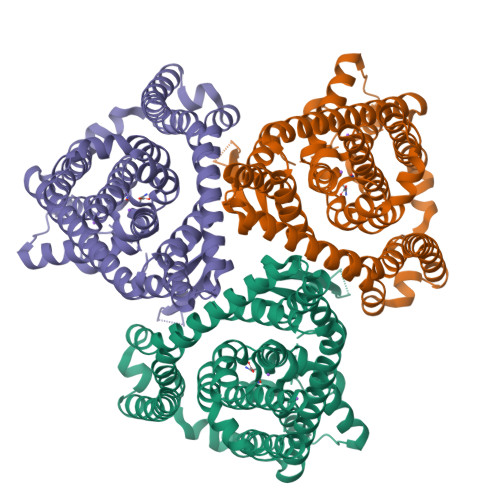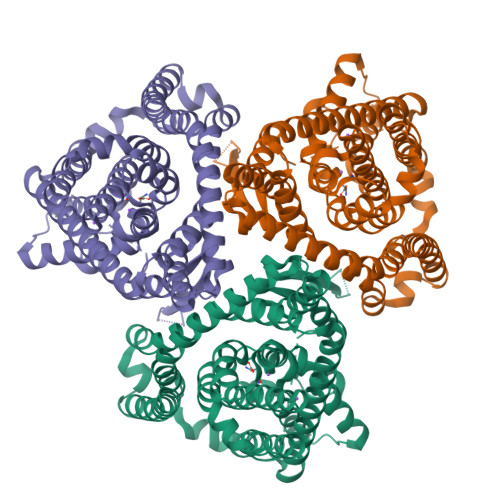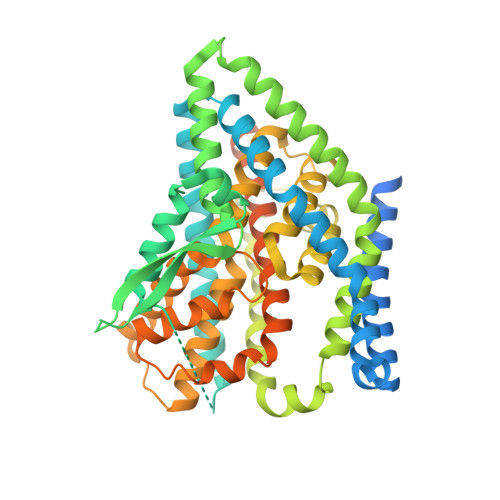Structural basis of the obligatory exchange mode of human neutral amino acid transporter ASCT2.
Borowska, A.M., Chiariello, M.G., Garaeva, A.A., Rheinberger, J., Marrink, S.J., Paulino, C., Slotboom, D.J.(2024) Nat Commun 15: 6570-6570
- PubMed: 39095408
- DOI: https://doi.org/10.1038/s41467-024-50888-8
- Primary Citation of Related Structures:
8QRO, 8QRP, 8QRQ, 8QRR, 8QRS, 8QRU, 8QRV, 8QRW - PubMed Abstract:
ASCT2 is an obligate exchanger of neutral amino acids, contributing to cellular amino acid homeostasis. ASCT2 belongs to the same family (SLC1) as Excitatory Amino Acid Transporters (EAATs) that concentrate glutamate in the cytosol. The mechanism that makes ASCT2 an exchanger rather than a concentrator remains enigmatic. Here, we employ cryo-electron microscopy and molecular dynamics simulations to elucidate the structural basis of the exchange mechanism of ASCT2. We establish that ASCT2 binds three Na + ions per transported substrate and visits a state that likely acts as checkpoint in preventing Na + ion leakage, both features shared with EAATs. However, in contrast to EAATs, ASCT2 retains one Na + ion even under Na + -depleted conditions. We demonstrate that ASCT2 cannot undergo the structural transition in TM7 that is essential for the concentrative transport cycle of EAATs. This structural rigidity and the high-affinity Na + binding site effectively confine ASCT2 to an exchange mode.
Organizational Affiliation:
Faculty of Science and Engineering, Groningen Biomolecular Sciences and Biotechnology, Membrane Enzymology Group, University of Groningen, Groningen, the Netherlands.


















